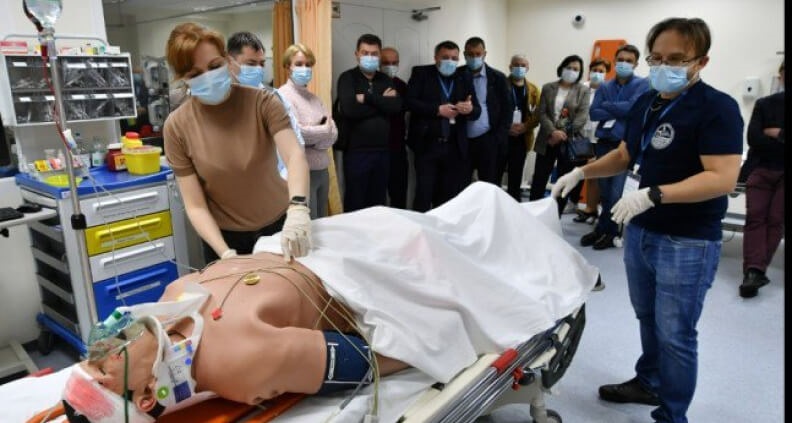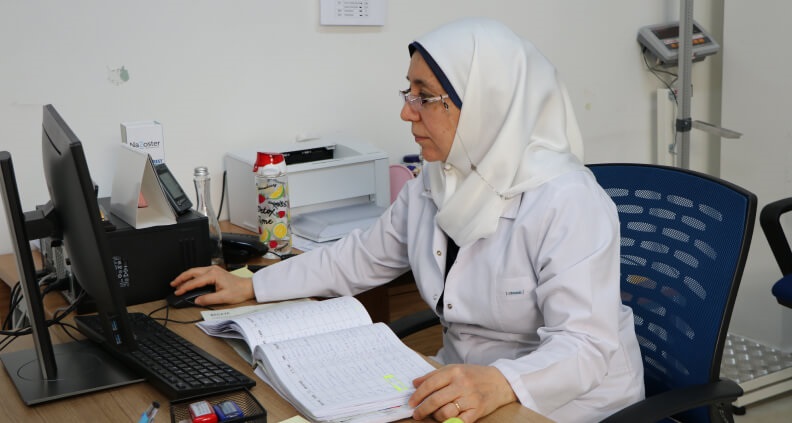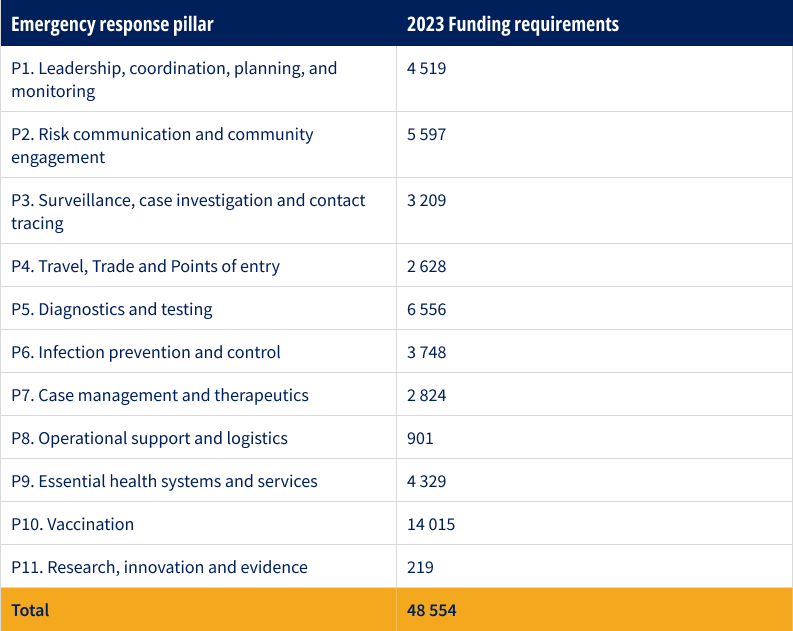
European Region
EURO: Regional Appeal
- Requirements (US$): 347.3 million
Context
The WHO European Region’s 53 member states cover a vast and diverse, highly interconnected, region with respect to geographical, population and economic status, health system maturity, disease and hazard profiles. An emergency in one country quickly impacts its neighbours.
The European Region continues to experience several emergencies with severe health impacts, the most notable in 2022 being the escalation in the Ukraine conflict. Recent concurrent emergencies, including the continued human toll of the COVID-19 pandemic, the war in Ukraine with its human suffering, destruction and geopolitical consequences, the multi-country mpox disease outbreak, and the continued polio virus circulation have shown that Member States of the WHO European Region remain vulnerable to the full range of emergency hazards, irrespective of their health system maturity and economic development.
All ongoing emergencies, and the ad hoc needs of other protracted emergencies such as the continued conflict between Armenia and Azerbaijan, continue to demand significant response resources. WHO must also be ready for further sudden onset events and natural disasters, including events related to climate change.

Trainers demonstrate the primary and secondary survey of a trauma patient.
Emergency response
WHO/Europe will continue to support countries to prevent, prepare, respond to, and recover from emergencies, including in humanitarian settings across the region. The regional response strategy is aligned with WHO's Thirteenth General Program of Work 2019−2023 and goes hand-in-hand with efforts to help countries meet obligations under the International Health Regulations (IHR) (2005).
Areas of focus include mounting an effective response to ongoing and new acute, single and multi-county emergencies, involving emerging and re-emerging epidemic-prone diseases, influenza, foodborne diseases and vaccine-preventable diseases (e.g., measles). WHO/Europe will also improve regional readiness to rapidly respond to sudden-onset events, such as major earthquakes, floods, volcanic eruptions and landslides, as well as human-induced hazards, including industrial accidents and chemical or radio-nuclear events. In addition,
WHO/Europe will work to build the regional health emergency workforce, increasing coordination between partners and stakeholders across the Region, strengthen systems for rapid knowledge generation through networks of scientific institutions and public health authorities, and support the response to health emergencies in other parts of the world (e.g., Syria), which have led to long-term humanitarian and refugee health needs in Europe.
Regional priorities
Providing tailored support to countries, reinforcing regional preparedness and capacity to respond to emergencies, are core priorities of WHO’s European Programme of Work and Action Plan to Improve Public Health Preparedness and Response in the European Region, 2018–2023.
The further development of a new action plan for emergency preparedness and response in the region (Preparedness 2.0) for 2024–2029, will aim to build a European Region with the required capabilities and pan-European networks to rapidly detect, verify, and notify new and evolving health risks, and to effectively respond to emergencies caused by any hazard.
Priority emergencies for critical attention in 2023 include:
- COVID-19: Ending the COVID-19 emergency in Europe as part of the global pandemic response and transitioning COVID-19 response into routine disease prevention and response programming, including on Post-COVID condition (‘long COVID’).
- Mpox: Controlling and ultimately eliminating mpox infection in the WHO European Region.
- Ukraine: Saving lives, reducing disease and protecting mental health by improving access to quality health services in Ukraine and in all refugee-receiving countries.
- Polio: Sustaining the European region’s polio-free status and helping achieve global polio eradication.
- Protracted conflicts: Protecting affected communities from the chronic health system fragility, vulnerability and neglect in parts of the region affected by protracted or frozen conflict.

Syrian doctor trained by WHO to serve in the Turkish health care system.
Focus Countries
Ukraine
- People in need (overall humanitarian assistance): 17.6 million
- People targeted (overall humanitarian assistance): 9.4 million
- Requirements for Ukraine and Refugee Receiving and Hosting Countries (US$): 253 million
Since the start of the crisis in Ukraine, over 14.5 million refugees have crossed the borders to other countries, with over 7.9 million still residing in refugee-hosting countries (UNHCR January 2023). Within Ukraine, around 6.24 million people are still internally displaced (OCHA updated Sept 2022). There have been approximately 17 994 civilian casualties, with 11 075 injuries and 6 919 deaths recorded by the Office of the United Nations High Commissioner for Human Rights (OHCHR) as of January 2023.
The crisis remains acute, warranting continued response from the humanitarian community within Ukraine as well as regionally and globally. From October 2022, critical civil infrastructure was targeted increasingly, including electricity and water in several major cities such as Kyiv, Lviv and Dnipro, reducing access to health care and requiring enhanced emergency medical support. This is in addition to the continued lack of access in areas under the temporary military control by the Russian Federation and the areas of Donetska and Luhanska oblasts not under the control/beyond the control of the Government of Ukraine since 2014. Access is further disrupted due to the continuing attacks on health care. There have been 745 attacks verified by WHO as of January 2023.
WHO is committed to being in Ukraine and the refugee receiving countries both now and in the longer term through addressing immediate health challenges and humanitarian needs and supporting recovery and strengthening of health systems in line with the Ukraine Crisis Strategic Response Plan (SRP). In Ukraine, WHO’s approach will be coordinated with the HRP that is being developed by OCHA for 2023 and in the refugee countries with UNHCR’S 2023 Regional Refugee Response Plan (RRRP).
Türkiye
(Refugee Health Programme only)
- People in need: 4.5 million
- People targeted: 890 000
- Requirements (US$): 49.3 million
Türkiye is currently hosting the largest refugee population in the world with at least 4.2 million refugees and migrants, as well as 300 000 asylum seekers (as of Oct 2022), predominantly from Syria, followed by Iraq, Iran and Afghanistan. This situation has intensified due to the geo-political context and the strategic position of Türkiye.
Foreigners who are not registered with the Government of Türkiye have limited access to primary or referral health care but are provided with emergency care and essential public health, and then referred for registration. The registration and invalidation of health insurance coverage after one year has limited the access of refugees and migrants to essential health services.
The unmet health needs of refugees and migrants continue to be exacerbated by the COVID-19 pandemic, resulting in a decrease in access to health services, in particular maternal and newborn health (including vaccination), noncommunicable diseases and mental health, disability and rehabilitation services and health information. The WHO country office in Türkiye is already supporting the Turkish Ministry of Health to provide these essential health services to both the refugee and host populations, through support for community health, primary health care, non-communicable diseases and mental health, communicable diseases (including COVID-19) and health system strengthening. A renewal of its commitment will focus on improving health literacy, and mental health literacy for refugees and migrants.

Small cards with health information about monkeypox were handed out at the Pride parade earlier this year in Lisbon, Portugal.
Success stories
UKRAINE RESPONSE HIGHLIGHT: Building national surge capacities in mass casualty coordination through Emergency Medical Team (EMT) trainings
From April to June 2022, the WHO Emergency Medical Teams (EMT) Secretariat, together with WHO/Europe, delivered a series of courses on mass casualty management, focusing on coordination processes for Mass Casualty Management (MCM) events in Moldova and in Kazakhstan. In Ukraine, three MCM trainings were conducted in the last week of August in Zhytomyr and Cherkasy oblasts, with more than 150 attendees each.
The courses aimed to transfer knowledge and skills to local EMT health workers and help them to manage patients in mass casualty events, both before and after admission to hospital.
Modules were contextualized and adapted for each country, with theoretical and practical sessions demonstrating how to efficiently provide pre-hospital and hospital responses to emergency situations when the number of seriously injured patients exceeds available resources. This gave participants the opportunity to review and update their teams’ emergency plans for mass casualty response. The globally standardized ABCDE (Airway, Breathing, Circulation, Disability, Exposure) clinical management approach was also covered.
The training was provided by a joint team of instructors, which included WHO staff and doctors from Ukraine and the Republic of Moldova. The participants included doctors, nurses, engineers and administrators from the pre-hospital sector and hospital departments, including emergency medicine, trauma care, intensive care and surgery.
Financial requirements
Overall regional funding requirements for ongoing emergency response operations (US$ ‘000)


Overall regional funding requirements for COVID-19 and other emergencies (US$ ‘000)


Overall funding requirements by pillar for COVID-19 (US$ ‘000)


For more information
Gerald Rockenschaub | Regional Emergency Director, WHO Regional Office for Europe | rockenschaubg@who.int
Catherine Smallwood | Program Area Manager for Emergency Operations, WHO Regional Office for Europe | smallwoodc@who.int

